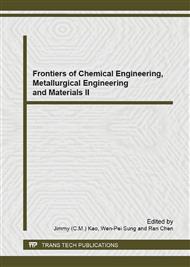p.454
p.459
p.467
p.471
p.475
p.480
p.485
p.489
p.496
A Study of the Influences on Stress and Temperature Caused by Different Wire Drawing Parameters by Numerical Simulation
Abstract:
This paper analysed the first-step of dry drawing of steel cords by numerical simulation. In different working conditions,a couple of simulations were made to analyses the influences on stress and temperature,different work cone angle,drawing speed,high of die bearing . Afer measuring the actual data of temperature experiment, the experimental results were in good great agreement with numerical simulartion.In this paper,some measures were concluded to reduce the drawing stress and temperature,which have guiding significance for the production of steel cord.Key words:Wire drawing die;Hole structure;Temperature;Decoupling
Info:
Periodical:
Pages:
489-495
Citation:
Online since:
September 2013
Authors:
Keywords:
Price:
Сopyright:
© 2013 Trans Tech Publications Ltd. All Rights Reserved
Share:
Citation:


